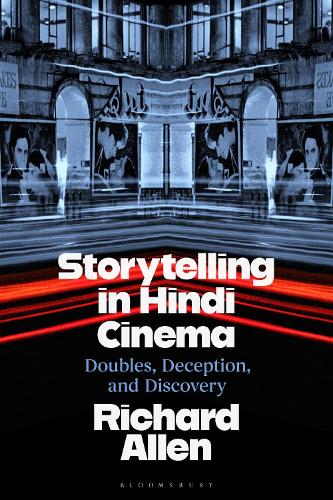
Storytelling in Hindi Cinema: Doubles, Deception, and Discovery
(Hardback)
Publishing Details
Storytelling in Hindi Cinema: Doubles, Deception, and Discovery
By (Author) Richard Allen
Bloomsbury Publishing PLC
Bloomsbury Academic
19th February 2026
United Kingdom
Classifications
Tertiary Education
Non Fiction
Film history, theory or criticism
Film: styles and genres
Physical Properties
Hardback
304
Width 156mm, Height 234mm
Description
From physical duplicates to role reversals and sexual masquerades, Storytelling in Hindi Cinema provides a comprehensive overview of Hindi films centered around the figure of the double.
Richard Allen dissects the cultural significance of these double-themed plots, considering how they reflect questions of social mobility, the expression of desire, social justice, and national identity in the post-colonial period. He considers the wide array of influences that shape the genre, from Sanskrit Kathasaritsagara story-telling traditions, folk Nautanki theatres, and Tales of the Arabian Nights to colonial and post-colonial roots from Shakespeare to Hollywood melodrama. He asserts the influence of Bengali cinema, particularly of filmmaker Hrishikesh Mukherjee, and South Indian films like Hello Brother (1994) in providing diverse perspectives that enrich these narratives.
Examining a broad range of films, from 1947 to present, including Mahal (1949), Madhumati (1958), Chupke Chupke (1975), Angoor (1982), Banjaran (1991), Kal Ho Na Ho (2003) and Dostana (2008), Allen traces the evolution of the trope, even incorporating transgressive narratives like cross-dressing and gender disguise. In doing so, he highlights how these cinematic motifs navigate the complexities of traditional worldviews and modern experiences.
Author Bio
Richard Allen is Dean of the School of Creative Media and Chair Professor of Film and Media Art at City University Hong Kong. He is co-author (with Ira Bhaskar) of Islamicate Cultures of Bombay Cinema (2009) and co-editor of Bombay Cinemas Islamicate Histories (2022). He has published widely on Bombay cinema.
